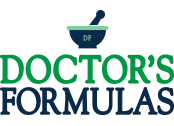Joint disorders are generally divided into 2 categories:
I. Degenerative arthropathies belong to chronic diseases. This category includes Osteoarthritis and Spondyloarthritis.
II. Inflammatory arthropathies belong to the category of potentially dangerous health conditions. This category includes Rheumatoid arthritis.
Degenerative and Inflamatory Joint Disorders
Articulation is the point on the body where two or more bones are attached to facilitate movement, providing stability to the musculoskeletal system.
The hinge structure consists of articular cartilage, synovial fluid, and synovial pouch (ligaments, tendons, collagen fibers).
Every day the joints take a significant part of the total body weight. This makes them particularly prone to their gradual alteration and injuries!
Within the joints, the cartilage areas support the proximal bones by providing protection, absorbing the vibrations and vibrations we experience when we move and blocking the grinding between the bones.
In cases of cartilage damage or lack of synovial fluid, the bones are rubbed together in such a way that it causes inflammation, swelling, pain, loss of mobility, and sometimes changes in the shape of the joint. The terms degenerative joint disease, degenerative arthropathy and osteoarthritis are often used interchangeably.
The main cause of degenerative joint disease is age and general wear due to the natural aging process of the body. However, there are some factors that can encourage, even aggravate, arthrosis.
These are:
• Frequent lifting of heavy objects
• Genetic predisposition
• gender and age
• Injuries that cause malformations
• The repeated bad posture of the body
Degenerative joint disease is usually not diagnosed until the painful symptoms cause the patient the need for further medical examination. But this situation has begun its development many years ago.
Its basic function is the distribution of loads and the reduction of pressures in the subchondral bone. During loading, it deforms, and after lifting it again takes its original shape. The articular cartilage has properties that allow it to receive loads and absorb vibrations. 60-80% of the total volume of articular cartilage consists of water, whereas from its dry weight, 50% consists of collagen and the remaining 50% of chondrocytes and other intracellular space compounds, such as proteoglycans, lipids, inorganic salts. The thickness of the cartilage on the articular surfaces varies from 2-4 millimeters and decreases with aging. It is fed by diffusion from the synovial fluid. This is produced by the synovial membrane and its amount in a normal joint is minimal.
Osteoarthritis and Rheumatoid Arthritis
There are over 100 different types of arthropathy, but osteoarthritis is the most common. Rheumatoid arthritis is the second most common form of arthritis. It is considered an autoimmune aetiology because it is caused by the immune system, which attacks the healthy body tissues. While osteoarthritis is caused by mechanical damage to the joints and therefore not characterized as autoimmune disease.
Both osteoarthritis and rheumatoid arthritis result in pain, swelling, inflammation and ultimately joint damage or deformity.
Degenerative joint disease is a progressive disorder that attacks the articular cartilage. Synovial cartilage is the hard tissue that covers the end of the bone, allowing them to move smoothly, reducing the pressure in the subchondral bone.
This benign chronic disease results in the reduction of cartilage over time, which inevitably leads to joint pain, inflammation, swelling and motor problems.
The structure of articular cartilage consists of 65% to 80% water, the rest consists of three components: collagen, proteoglycans and chondrocytes.
Collagen is a type of fibrous protein that acts as a natural "building block" of the body for skin, tendons, bones and other connective tissues. Protein glycans coexist with collagen to form a grid-like tissue that allows the cartilage to absorb vibrations while chondrocytes mainly produce cartilage and help keep it intact as the years go by.
Some of the ways in which you can help the body to maintain so valuable articular cartilage and reduce inflammation is to add to your daily routine antioxidants and special nutrients that for a variety of reasons you have not been able to get enough.
Additionally, agents such as type II collagen (identical to human body) and shark cartilage can work by lubricating the joint, providing flexibility to it or stopping T cell attacks.
Cartilage damage can be caused by a combination of factors such as:
* Genetic predisposition
* Inflammations,
* Bad nutrition choices,
* Lack of physical activity
* Repetitive movements
* Aging (normal "wear" on the body)
People with osteoarthritis as their movement grows becomes more painful because the bones are rubbed together instead of being protected from the slippery substance that should normally act as a regulatory agent between the bones.
Symptoms of osteoarthritis can develop throughout the body, especially where there is a joint. Usually, however, it significantly affects the spine (upper and lower back), neck, hips, knees and hands.
Symptoms of osteoarthritis usually include:
1. Pain in the joints
2. Stiffness (especially in the morning or after a period of inactivity)
3. Mobility problems, which aggravate as the disease develops
4. Swelling - Redness - Sensitivity
The nature of osteoarthritis is degenerative, as the condition tends to worsen over time. Unfortunately, known "treatment" at this time to stop it from progressing or to reverse the damage already done, does not exist.
In conclusion, prevention is essential and of great importance!
Without care, degenerative joint disease usually gets worse over time and can begin to affect all the large joints of the body.
Generally, choosing a lifestyle with small adjustments to daily routine, it is possible to manage proactively the extent of cartilage degradation.
Preventing osteoarthritis, patients can be relieved of symptoms but also prevent the development of problematic secondary conditions.
To improve the patient's mood and to be able to handle the anxiety of fighting a degenerative disease, the main goals for all degenerative tissue or joint diseases are:
1. Reduction of inflammation and swelling
2. Pain control
3. Maintaining a healthy body weight so that less pressure is exerted on the fragile joints.
As a side effect of chronic pain and restriction of mobility or even work, depression and feeling of despair, sleeping problems and weight gain can develop.
Exercise
Exercise is considered one of the most important treatments for degenerative joint disease. It is important for reducing inflammation, increasing flexibility, strengthening muscles, enhancing circulation and supporting a healthy body weight.
It is necessary to widen the range of motion of the joints.
By boosting certain muscles and losing weight, it is possible to reduce the amount of stress on the joints.
Beneficial and less painful types of exercise are walking, swimming and aerobic exercises in the water.
All this helps to reduce the severity of the symptoms and the slow progression of the disease, in order to avoid the swelling of the cartilage and the increase in the synovial fluid resulting from pathological conditions, which are usually inflammatory.
In addition, let's not forget the mental benefits of exercise! Regular exercise is the ideal way to reduce anxiety, improve mood, control stress hormones such as cortisol, and promote quality sleep.
Body Weight
Maintain a healthy weight. This should be seen as a long-term lifestyle change rather than as a search for a fast, low-calorie diet that is most likely to lead to nutrient deficiencies necessary to limit further injuries.
Sleep
The body needs sleep and relaxation. When there is a lack of these two, it means that the joints and muscles have less time to recover, whereas stress hormones, body weight and inflammation tend to increase. Seven to nine hours of sleep are recommended daily to repair the damaged tissue so that the joints are relieved from the daily stress they experience.
Nutrition
Research has shown that poor nutritional choices increase inflammation and enzymes that destroy collagen, as well as other proteins that are important for the maintenance of healthy tissues. The foods that promote inflammation are:
I. Refined vegetable oils
II. Pasteurized dairy products and conventional meats, poultry and eggs, which contain added hormones, antibiotics and omega-6 that contribute to inflammation
III. Refined carbohydrates, processed cereal products and added sugars
IV. Trans fats / hydrogenated fats
It may not be possible to treat joint diseases completely, but there are many natural remedies available for arthroses that are able to have a big impact on the patient's daily routine.
When implemented effectively, the following strategies often allow patients to live the life they love without being severely inhibited by joint diseases.
Cartilage erosion is generally recognized as an integral manifestation of arthritic disease, often accompanied by the development and progression of inflammation associated with it.
Medications may only provide partial relief from this chronic pain and may be associated with undesirable effects.


